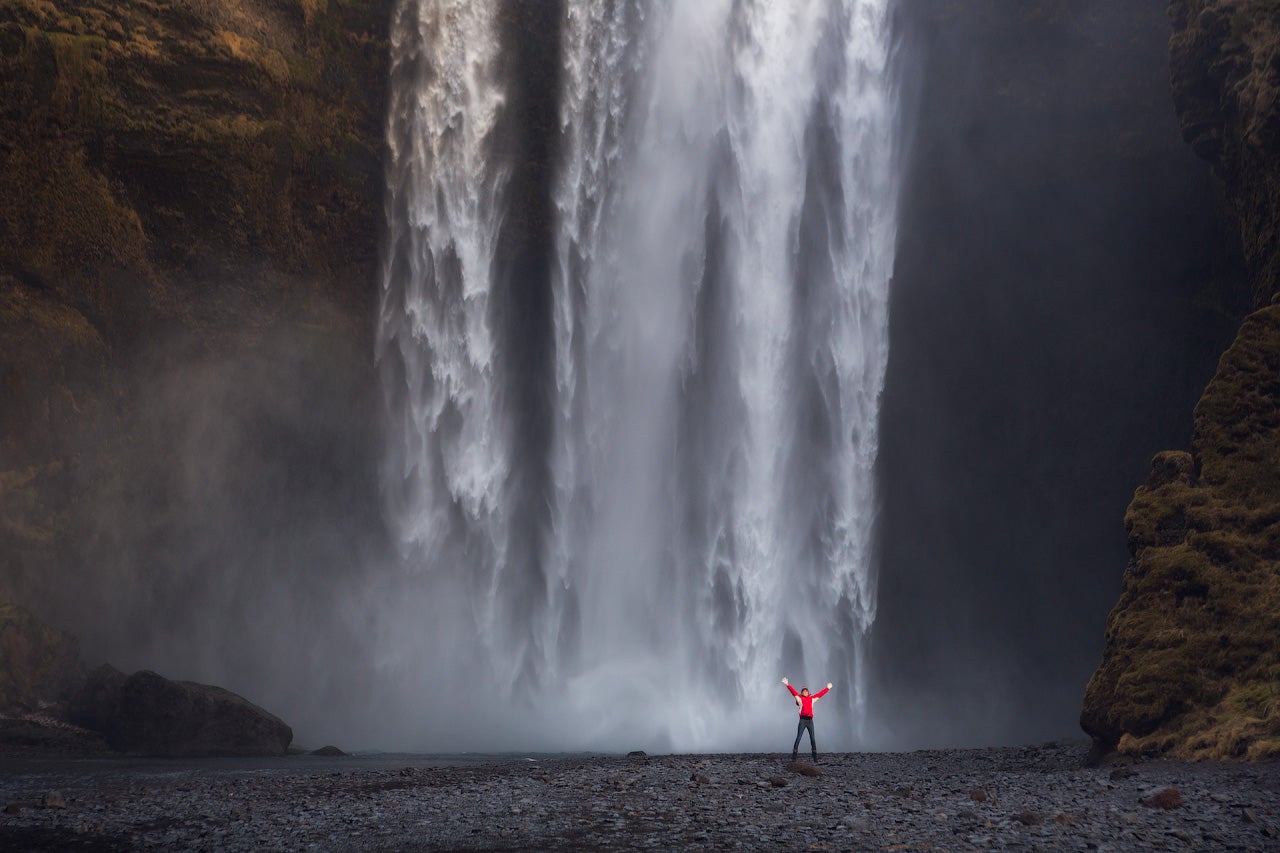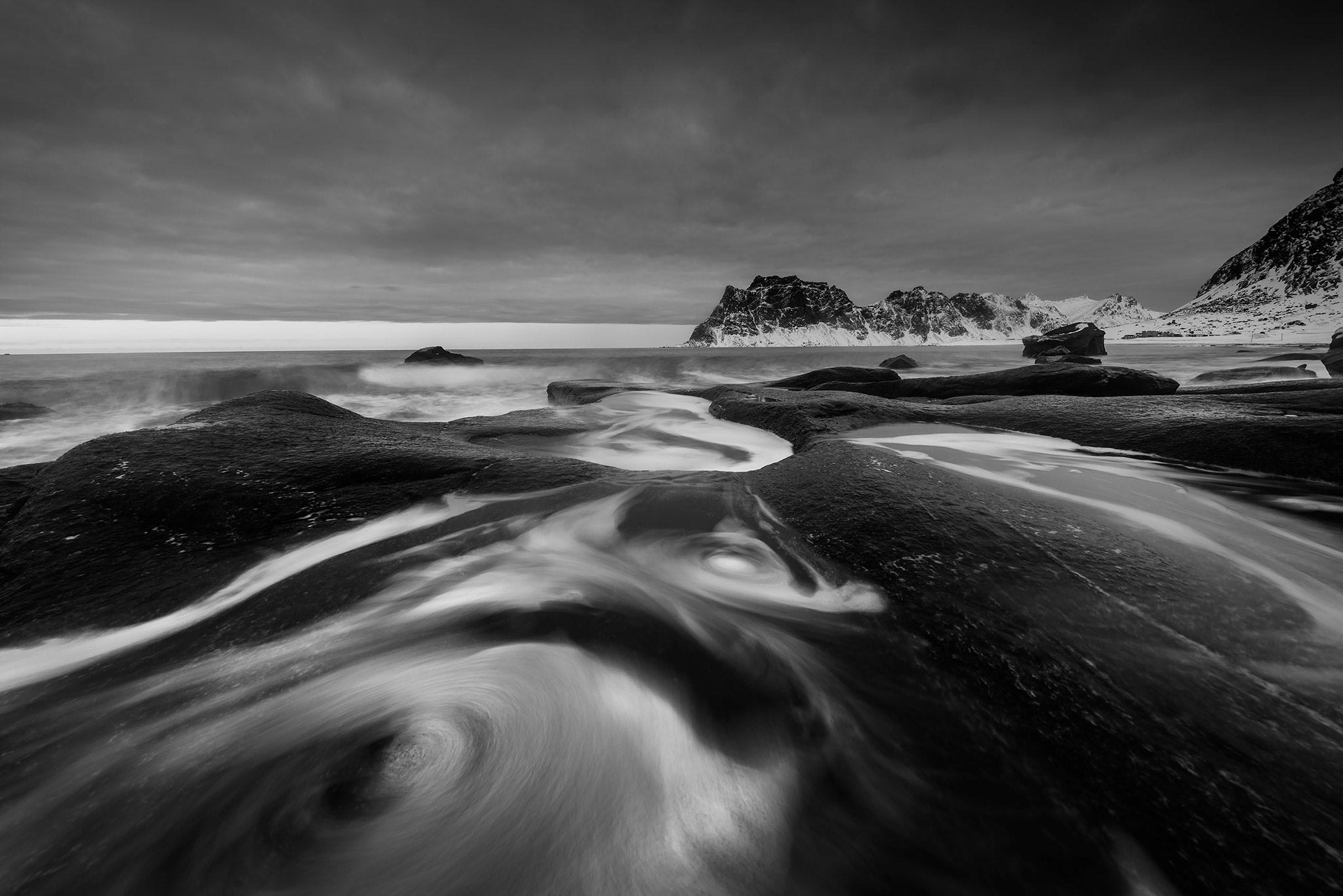
There is no better time to experiment with learning new landscape photography techniques than while you’re travelling in Iceland. The scenery is magnificent and the conditions may be unpredictable, meaning that you’ll likely experience different forms of natural lighting and weather that you can test your skills with!
- Learn How to Make Mesmerising Minimal Photography
- Check out this article on How to Minimise and Clean Camera Sensor Dust
- Discover The Ultimate Guide to Animals in Antarctica
It’s no secret amongst professional photographers that learning new techniques can be a huge source of inspiration. In fact, exploring new techniques can reveal the otherwise hidden potential for you to take your landscape photography in a different direction, by really harnessing and expressing your creativity. Practicing new photography techniques is equally as important for aspiring landscape photographers, as they mean that you’ll be able to take one large step closer to mastering your camera, which in turn can open up many new possibilities for your photographic work.
So are you ready to discover some of the most popular photography techniques that you can put into practice during your trip to Iceland? We’ve compiled a list of some of our favourite photography tips and tricks to help you get your creative juices flowing, which will really help to improve your landscape photography skills and put you on the right road to bringing home stunning images of Iceland.
1. Long Exposure Photography
Long exposure photography sits at the top of the list for photography techniques that you can try out while you’re in Iceland and there are quite a few reasons for it! This particular technique is used by landscape photographers to achieve all kinds of interesting results with different types of scenery. It’s particularly useful for blurring movement and creating effects such as smooth, dreamy water or softly streaked clouds across the sky. By using this technique, you can gain greater control of a scene, unlocking the ability to minimise the chaos for a more interesting and harmonious composition.
 Long exposure photography is great for waterfalls, like Kirkjufell on the Snaefellsnes Peninsula. Photo by: 'Iurie Belegurschi'.
Long exposure photography is great for waterfalls, like Kirkjufell on the Snaefellsnes Peninsula. Photo by: 'Iurie Belegurschi'.
Iceland is well-known for its endless number of waterfalls, from the beautiful Seljalandsfoss and Skógafoss in the south, to the magnificent Aldeyjarfoss and Goðafoss in the north. These are perfect places to try out the long exposure photography technique during your trip to Iceland.
Don’t just restrict yourself to waterfalls though. If the clouds aren’t particularly interesting or you’d like to bring in a dynamic element to your shots, then try using this technique to capture the movement. You’d be surprised at how long exposures can really change the overall drama and atmosphere of your shots.
To really put this technique into practice, we recommend investing in a set of good quality neutral density filters, such as the NiSi 6-stop and 10-stop filter, which will allow you to reduce the amount of light entering the lens. This reduction of light effectively means that you can expose the scene for a longer period of time. You can even get super creative by making long exposures of several minutes, even when it’s bright daylight outside.
 A long exposure of Seljalandsfoss on Iceland's south coast. Photo by: 'Iurie Belegurschi'.
A long exposure of Seljalandsfoss on Iceland's south coast. Photo by: 'Iurie Belegurschi'.
Another benefit of using this technique at some of the popular locations around Iceland is that a longer exposure allows you to remove people from your images, without having to do anything fiddly during post-processing. You won’t have to worry even if people are walking all through the foreground of your shot – using the long exposure technique over the course of a few minutes means that they won’t even show!
2. Panorama Photography
Sometimes, the scenes that you’ll find in Iceland will be just too much to fit into even your widest lens. The best way to capture the vastness of the landscape is then to use the panorama photography technique.
Panoramic photography is a special technique that involves taking multiple images that you can stitch together later during post processing to form a single, wide format photograph. A great way to get started with this technique is to try capturing 2-3 shots of a scene, such as at the Jökulsárlón glacier lagoon, where the icebergs seem to span for miles from left to right. This is a manageable number of photographs that you can begin practicing to stitch using software such as Adobe Photoshop.
You can begin by taking a couple of landscape orientation horizontal shots, each with about 50% overlap, by moving your camera slightly to the left or right. For higher resolution images, try taking photos in portrait orientation – you may have to take a few more shots to get the entire scene in, but you’ll be rewarded with more resolution to work with, which will benefit you particularly for printing.
 The Jokulsarlon Glacier Lagoon is a great place to try out panorama photography. Photo by: 'Iurie Belegurschi'.
The Jokulsarlon Glacier Lagoon is a great place to try out panorama photography. Photo by: 'Iurie Belegurschi'.
Once you really start to master the panorama photography technique, you can slowly increase the number of shots that you take at your next location. Of course the more images that you have to stitch, the trickier it can be. Some photographers even take hundreds of photos that they stitch together to create ultra high resolution images known as “gigapixel” panoramas. Now how’s that for size?
3. Night Photography
The technique of night photography – shooting the stars in the sky with some of the surrounding scenery at night – can be difficult to get into, particularly if there isn’t much to shoot around where you live, or if there is a lot of light pollution. However, if you want to be able to capture the Northern Lights in Iceland then you’d best start practicing this technique straight away!
 There's no better place to capture the Northern Lights than in Iceland. Photo by: 'Iurie Belegurschi.
There's no better place to capture the Northern Lights than in Iceland. Photo by: 'Iurie Belegurschi.
There’s no doubt that shooting in low light can be hard, especially if you can’t see very well at night to be able to set things like the focus. In fact, setting the focus is probably the most difficult part of this technique but once you’ve got it set, then you’re all good to go. The trick then is to make sure that both the stars and the landscape are in focus, to ensure an aesthetically pleasing shot.
To get started with night and Northern Lights photography in Iceland, you’ll need a camera with low noise and high ISO capabilities that can shoot in RAW, a fast and wide angle lens, as well as a tripod to minimise shake. Composing your shot is no different to making a composition during the day, except that you may not be able to see the landscape very well in the dark.
Framing an interesting composition with the Northern Lights can be a little bit more difficult, particularly if they emerge from a point in the sky that doesn’t line up very well with your foreground elements. As such, it’s important to look for locations that point towards the north, and to find a subject that you can use that sits roughly in the same direction.
Some great places to practice the night photography technique for the Northern Lights include the Black Church of Búðir on the Snæfellsnes Peninsula, as well as the artist’s residence of Straumur near the Keflavík airport in south west Iceland.
 Straumur is a great place for Northern Lights photography. Photo by: 'Edwin Martinez'.
Straumur is a great place for Northern Lights photography. Photo by: 'Edwin Martinez'.
- See also: Winter Workshops in Iceland
4. Timelapse Photography
Timelapse photography may seem very complex if you’ve never done it before but it can yield some pretty interesting results. Basically, this photography technique allows you to create a video from a sequence of images taken of the same scene over a period of time.
The idea is to take a bunch of photographs at certain intervals, such as every 10 seconds, and then to stitch them together during post-processing to form a sequence. The overall effect is to show a lot of movement within a very short period of time. It’s almost like warping time. If you’ve ever watched nature documentaries of seeds germinating before eventually blooming into flowers, which can take a long time but is sped up into just a few seconds in a timelapse sequence, then you’ll know what we mean.
Although this may be an exciting new photography technique to try out while you’re in Iceland, it can be very time-consuming and involves a lot of planning. If you’ve only got half an hour at each shooting location, then it’s probably not the best time to try it. However, if this is what you’ve got your heart set on doing and you have all the time in the world to do it, then there is no better place to try it than in the incredible landscape of Iceland.
One great location worth considering for timelapse photography is the Diamond Ice Beach, where icebergs that resemble diamonds wash ashore. Another moment to practice time lapse photography is at night, when the Northern Lights come out to play. You’ll likely have to combine hundreds to thousands of photos to showcase their movement as they dance across the sky but in the end, the effect will be worth it and infinitely more interesting to show off to your family and friends than a single, still image!
By trying out some of the popular photography techniques that we’ve mentioned above, you’ll be able to find new ways of photographing the landscape while you’re in Iceland. This could lead to more interesting compositions as you master the ability to create truly mesmerising photos that will stand out from the crowd.
About the author: Serena Dzenis is a landscape photographer based in Iceland. You can find more of her work on her website or by following her on Facebook and Instagram.
Have you tried any of the techniques that we’ve talked about? What are some of your favourite photography tips and tricks for better landscape photography in Iceland? Share them with us below!












